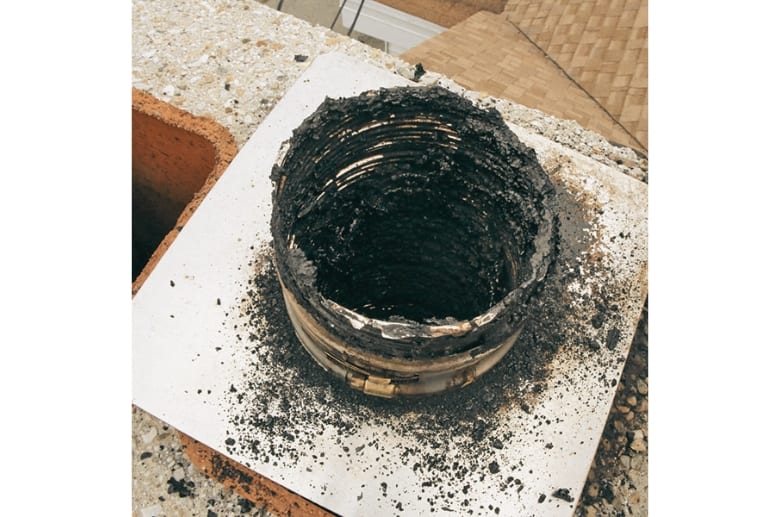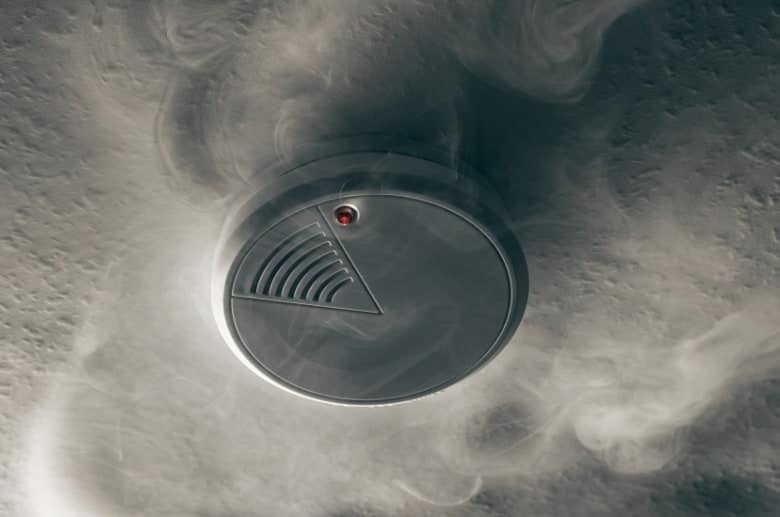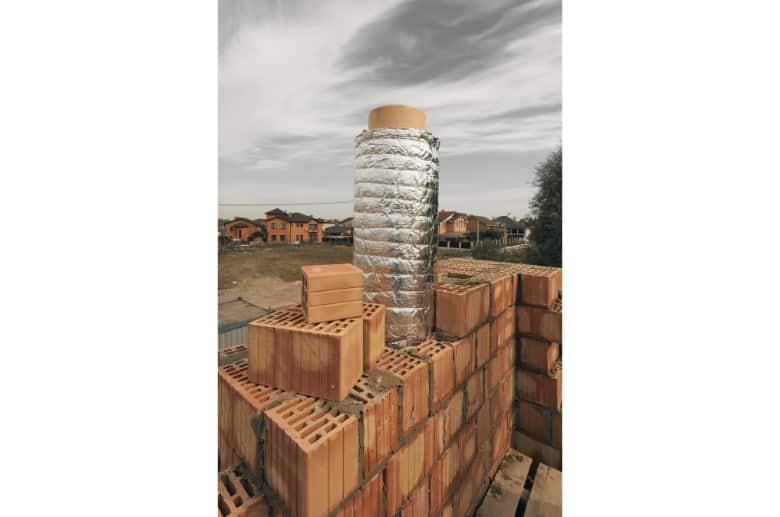Prefab chimneys are one of the various types of chimneys that have grown in popularity due to their convenience and cost-effectiveness. However, with this convenience comes potential safety concerns that must be addressed. This includes fire outbreaks, carbon monoxide poisoning, and structural collapse.
While homeowners and builders seek faster and more efficient solutions, it’s crucial to understand the safety concerns surrounding prefab chimneys and the necessary steps to ensure their safety. This will protect your property, investments, and loved ones from potential hazards
So back to the question, “Are prefab chimneys safe?”
With proper installation and maintenance, prefab chimneys are safe. This guide will provide a comprehensive safety analysis and tips for protecting your home and loved ones using prefab chimneys.
Are Prefab Chimneys Safe?
Every homeowner needs to be aware of the safety concerns associated with prefab chimneys.
Fire Hazards
Prefab chimney fires can be dangerous and destructive. Such fires spread rapidly and endanger the lives of occupants. In addition to the risk of injury and death, prefab chimney fires can result in costly property damage and repairs.
As a homeowner, you should take these risks seriously and take appropriate measures to ensure your prefab chimney is properly installed, maintained, and used safely. That starts with understanding the common causes of prefab chimney fires.
1. Creosote Buildup

Creosote forms when the gasses produced by burning wood cool and condense on the interior walls of the chimney. This buildup becomes thick and dense when the chimney is left uncleaned or unattended over time. It can easily ignite, causing a chimney fire.
2. Improper Installation
This refers to installing a prefab chimney contrary to the manufacturer’s instructions or the relevant safety standards. This includes incorrect height, insufficient clearance from combustible materials, an improper chimney liner, and a lack of insulation.
Improper installation is a serious fire threat. For instance, insufficient clearance from combustible items can cause nearby materials, such as wood framing or insulation, to ignite and start a fire. If the chimney liner is not correctly installed, it can allow hot gasses and sparks to escape and ignite.
——
Do You Need to Hire Chimney & Fireplace Expert?
Get free quotes from qualified experts near you. No commitment required!
——
3. Lack of Maintenance
Neglecting regular maintenance can lead to the accumulation of creosote and other debris. Debris, such as leaves, twigs, or animal nests, are highly combustible and can easily cause a chimney fire when left unattended.
Carbon Monoxide Poisoning

Carbon monoxide is a colorless, odorless gas that can build up inside the home if the chimney is not installed or maintained correctly. Carbon monoxide poisoning can be deadly in high concentrations, but recognizing the symptoms can be challenging.
According to the Centers for Disease Control and Prevention (CDC), approximately 430 people in the US die from accidental carbon monoxide poisoning annually. An additional 50,000 wind up in the ER due to exposure to CO.
While there are several ways that faulty prefab chimneys can cause carbon monoxide poisoning, the most common issue is a blockage in the chimney. Blockages can occur due to a creosote buildup or other debris, such as leaves or animal nests in the chimney. This prevents proper venting of the gasses produced by burning fuels.
In addition to carbon monoxide poisoning, several other health hazards are associated with faulty prefab chimneys. These include:
- Respiratory problems: If a chimney is not installed or maintained correctly, it can lead to poor indoor air quality, which can cause respiratory problems. This is particularly true for individuals with pre-existing respiratory conditions, such as asthma or chronic obstructive pulmonary disease (COPD).
- Cancer: Studies have shown that long-term exposure to creosote can increase the risk of certain types of cancer, including skin and lung cancer.
- Eye and Skin Irritation: Irritants in the air can cause redness, itching, and even rashes. These irritants may include creosote buildup, mold growth, and other particulate matter in the air caused by a blocked or leaking prefab chimney.
Safety Concerns for Homeowners
There are several safety concerns you should be aware of if you own a prefab chimney.
Lack of Proper Insulation
A lack of insulation can cause excessive heat buildup, which can cause structural damage to the chimney and other parts of the home. Heat buildup can also cause combustible materials in the surrounding area to catch fire.
Furthermore, a lack of proper insulation can cause condensation inside the chimney. This can lead to the accumulation of water in the chimney, which contributes to mold growth or the development of rust and corrosion. Over time, this can cause a health hazard in your home while weakening the chimney’s structure and compromising its safety.
Potential for Damage During Installation

Improper handling of the chimney components or incorrect assembly during installation can make the chimney structurally unsound and pose a safety hazard. For instance, if the chimney’s metal components are bent, dented, or scratched during transportation or installation, it can weaken or compromise the structural integrity.
Issues With Airflow and Draft
Insufficient airflow through the chimney can cause a buildup of smoke, gasses, and other byproducts of combustion inside the home. This can lead to respiratory problems, carbon monoxide poisoning, and fire hazards.
Difficulty Finding Replacement Parts
Over time, some chimney components may become worn or damaged and require replacement. Finding replacement parts for prefab chimneys can be challenging, particularly for older models or discontinued products.
This might force you to use generic or makeshift parts, which can compromise the safety and functionality of the chimney.
——
Do You Need to Hire Chimney & Fireplace Expert?
Get free quotes from qualified experts near you. No commitment required!
——
How to Ensure the Safety of a Prefab Chimney
Many homeowners make common mistakes that can compromise the safety of their prefab chimneys:
- Ignoring Maintenance: Chimneys require annual inspections and cleaning to remove creosote buildup, which can cause chimney fires.
- Improper Use: Many homeowners use their prefab chimneys to burn improper fuels or fail to open the damper correctly. This leads to the accumulation of dangerous gasses.
- Neglecting Warning Signs: This might include a smoky fireplace or a visible creosote buildup. Ignoring these warning signs can lead to chimney fires or other dangerous situations.
Prefab Chimney Safety Tips
Prefab chimney safety tips are essential to safeguard yourself from the common mistakes mentioned above. Below are some top prefab chimney tips you can adhere to:

- Use proper insulation materials: Use mineral wool, vermiculite, or ceramic fiber for the safety and efficiency of your prefab chimney. The material should be appropriate for the type of chimney and appliance used. If you’re not sure what to use, ask a professional.
- Use a chimney cap to prevent damage: A chimney cap helps prevent the entry of rain, snow, debris, and animals. This prevents chimney blockage, damage to the flue lining, rusting of the metal parts, and even damage to the masonry or structure of your chimney.
- Use proper ventilation and draft systems: A good ventilation system effectively removes the byproducts of combustion from your home, while the draft system helps to create a proper flow of air through the chimney.
Final Thoughts
The importance of prefab chimney safety cannot be overstated. Proper installation and maintenance can make prefab chimneys safe and efficient heating options for your home.
You should prioritize regular inspections and maintenance, have the chimney installed by a professional, and use proper insulation materials. You should also use a chimney cap to prevent water damage and combustible materials from entering your chimney.
By following these tips, you can ensure the safety and longevity of your prefab chimney. Despite the potential safety concerns, prefab chimneys can be an excellent option for your home!






